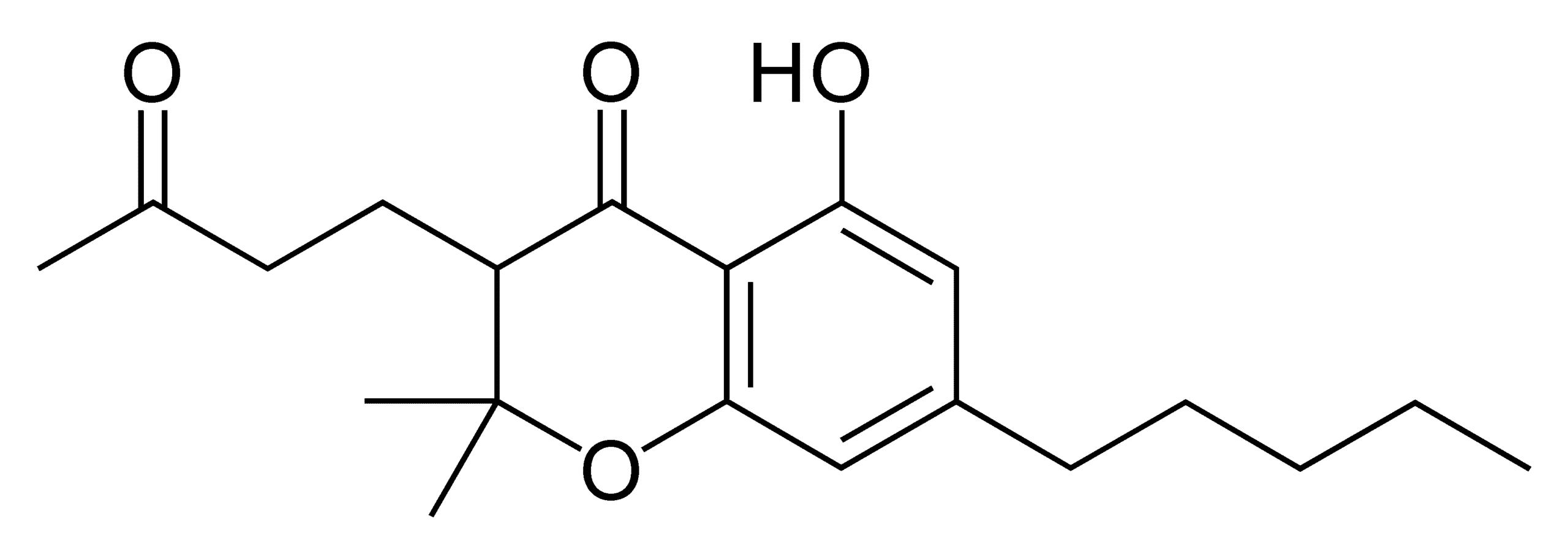
Cannabichromanone
 Cannabichromanone (CBCN) is a naturally occurring phytocannabinoid produced by the cannabis plant, and it belongs to the 2,2-dimethyl-1-benzopyrans class of organic compounds.
Cannabichromanone (CBCN) is a naturally occurring phytocannabinoid produced by the cannabis plant, and it belongs to the 2,2-dimethyl-1-benzopyrans class of organic compounds.
It is more nonpolar than THC, which may reduce the compounds ability to interact with the CB1 recpetor.
Cannabichromanone D is an analog of the primary compound, and it’s molecular arrangement shows promise when it comes to its potential in becoming a bioactive compound. This is because three out of four molecular models called pharmacophores demonstrate they may have enough energy to elicit receptor activation.
6a-R-cannabichromanone B is considered a metabolite of cannabis, noted by https://pubs.acs.org/doi/10.1021/acsomega.9b02663, as are 6a-R-cannabichromanone C and 6a-R-cannabichromanone D.
At the time of writing, very little is known about this cannabinoid, though it has shown promise with mile antimalerial and moderate antileishmanial activity.
Chemical Formula
The chemical formula for Cannabichomanone is C20H28O4.
Additional Resources
https://pubmed.ncbi.nlm.nih.gov/19844597/
https://eybna.com/terpene/cannabichromanone-c5/
https://ghmedical.com/tags/cannabinoid-system/cannabichromanone-b
https://www.ncbi.nlm.nih.gov/pmc/articles/PMC2763336/
https://pubchem.ncbi.nlm.nih.gov/compound/186690
https://chem.nlm.nih.gov/chemidplus/sid/0056154575
https://phytochem.nal.usda.gov/phytochem/chemicals/show/27713
https://pubs.acs.org/doi/suppl/10.1021/acsomega.9b02663/suppl_file/ao9b02663_si_004.pdf




































/5Total reviews
Persons recommended this product
Filter by
star Rating
attach_file Attachments
Anonymous
Shopper
check_circle Verified
Shop owner replied
Was this helpful
Facebook
X (Twitter)
LinkedIn
Reddit
Copied to Clipboard
Anonymous
Shopper
check_circle Verified
Shop owner replied
Was this helpful
Facebook
X (Twitter)
LinkedIn
Reddit
Copy Link
Thanks for your review!
Your feedback helps us improve our service.
There are no reviews yet.
Be the first to review “ ”
Only logged in customers who have purchased this product may leave a review